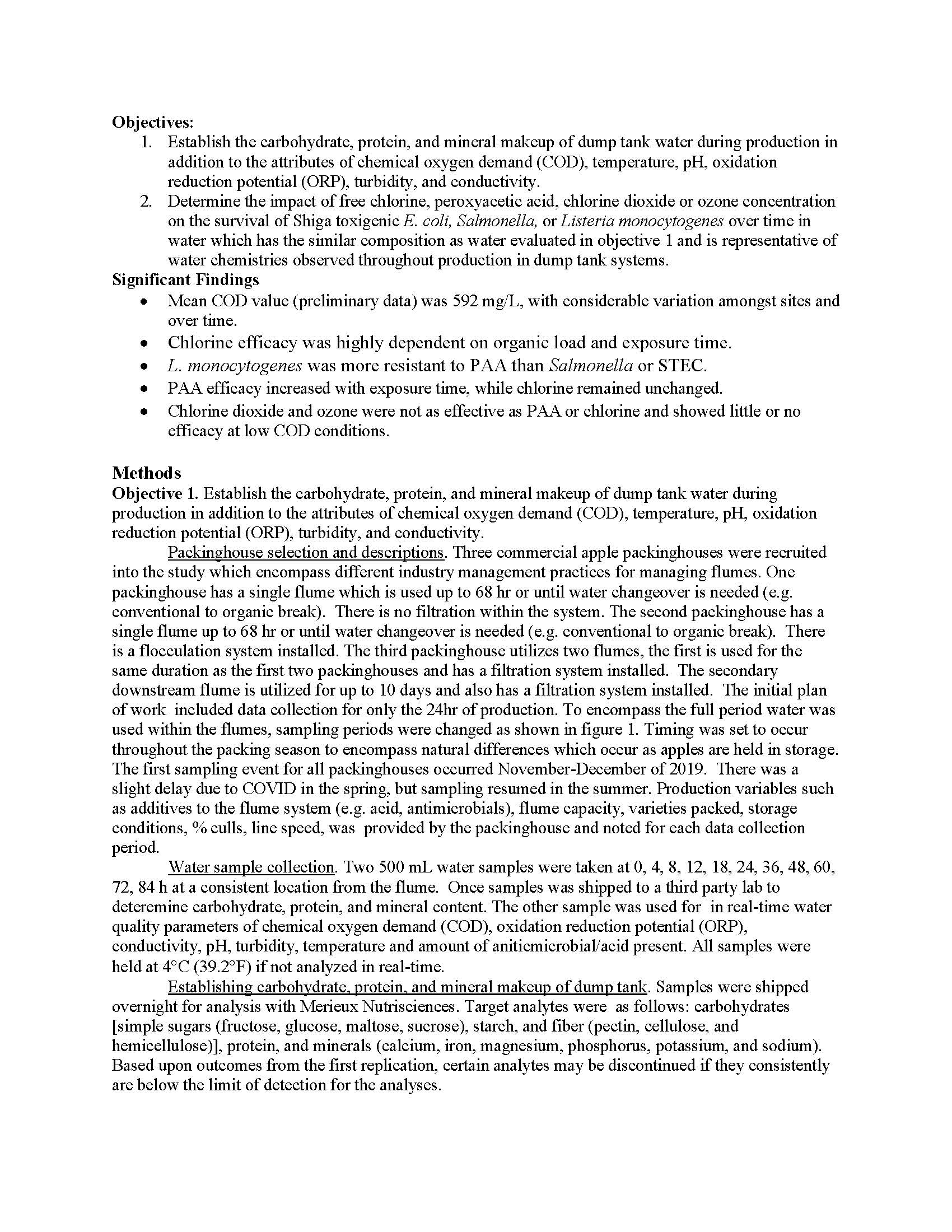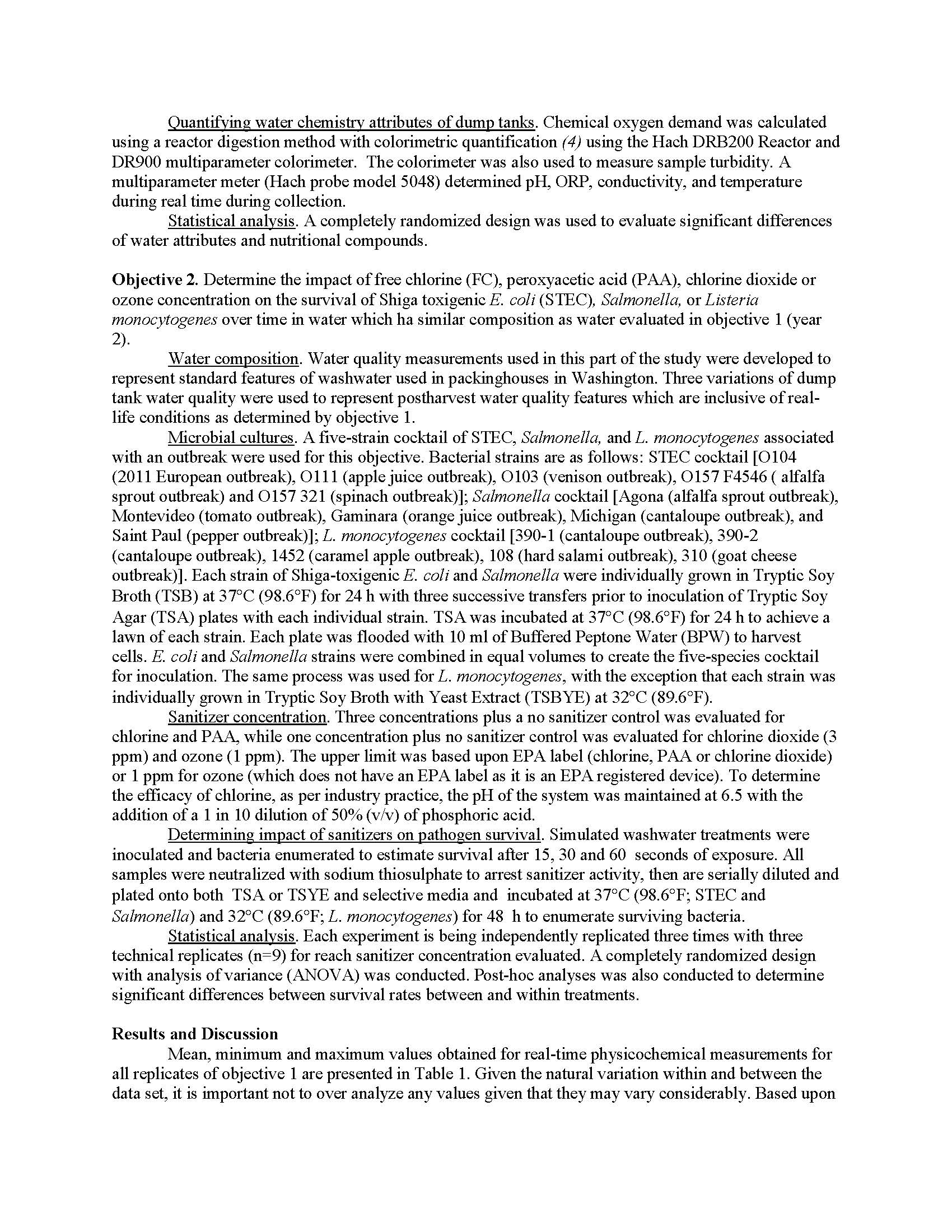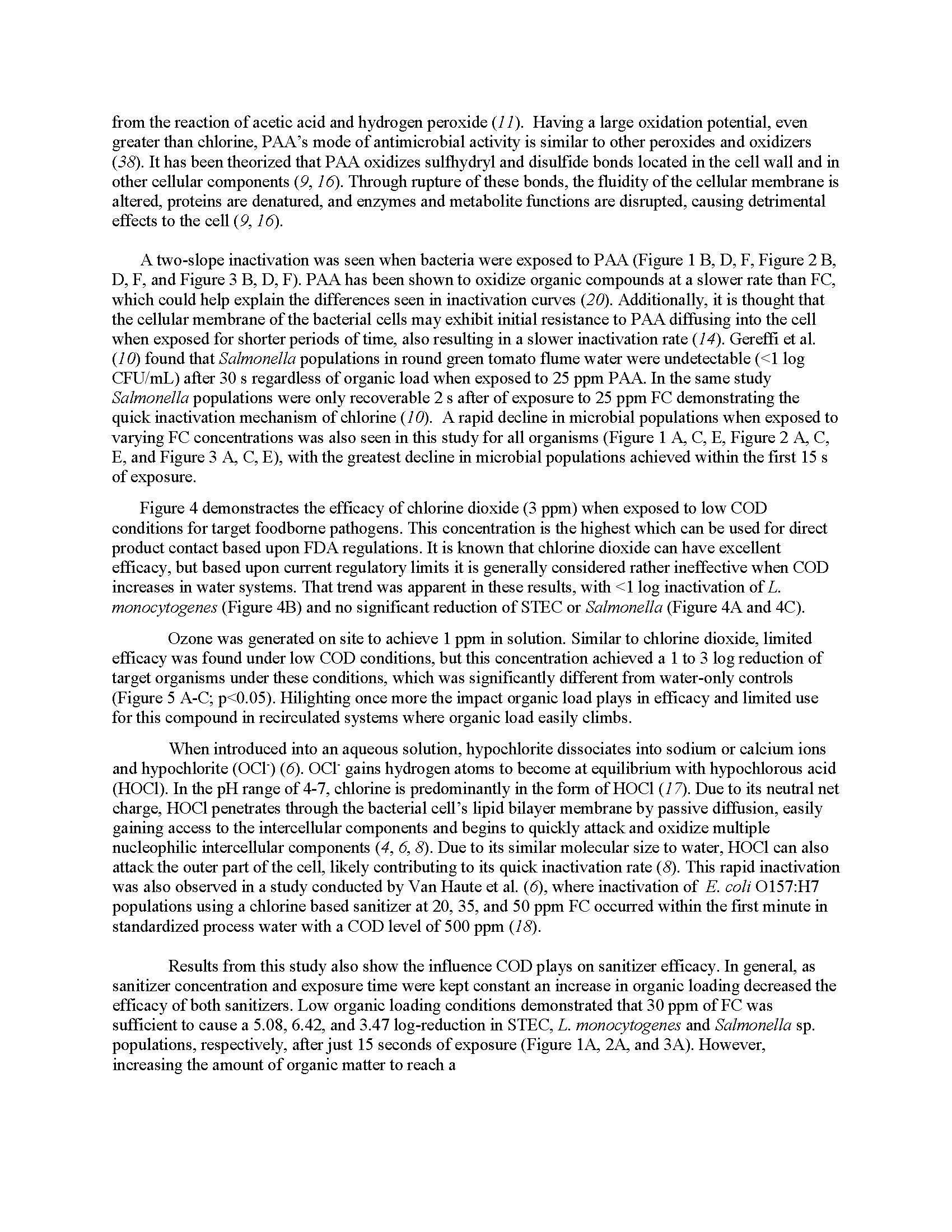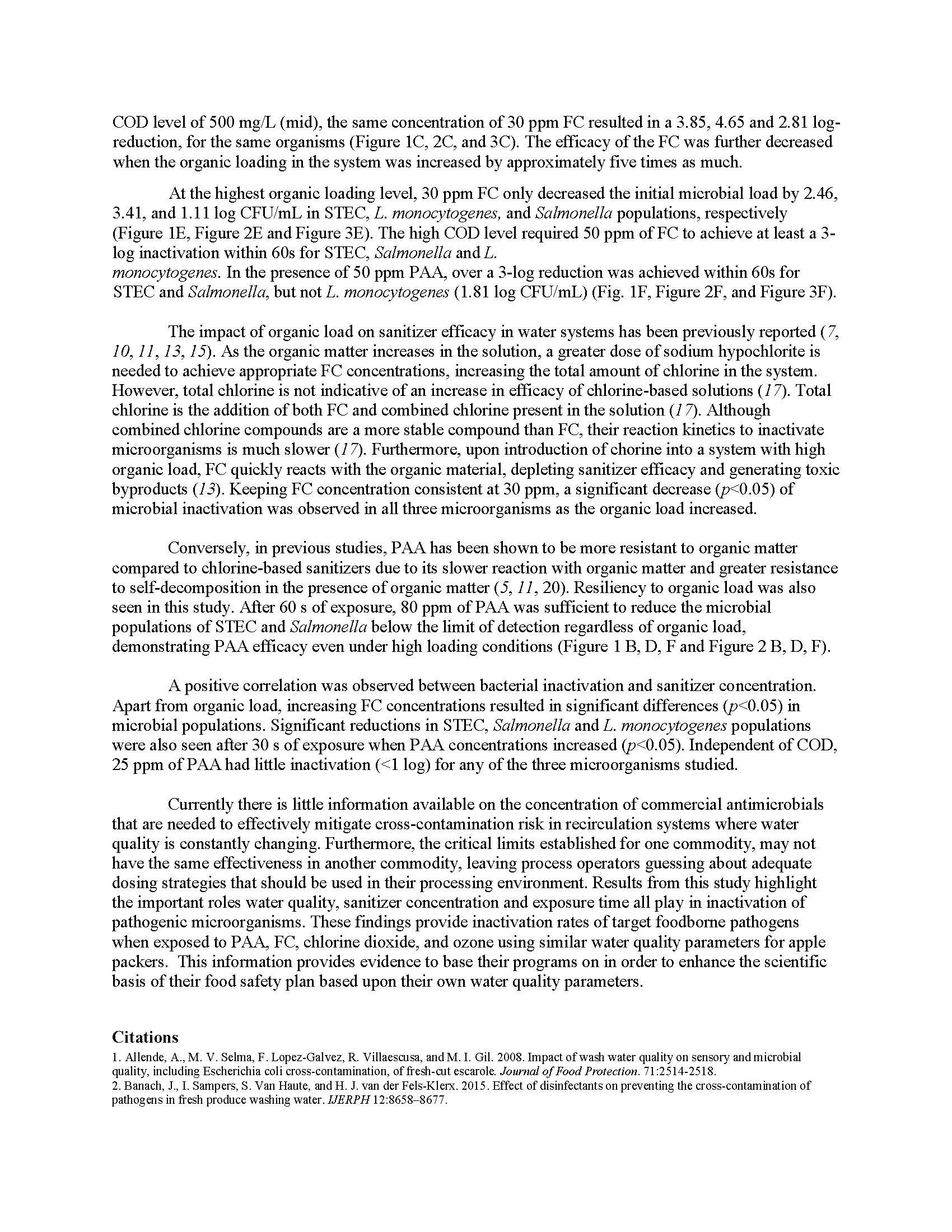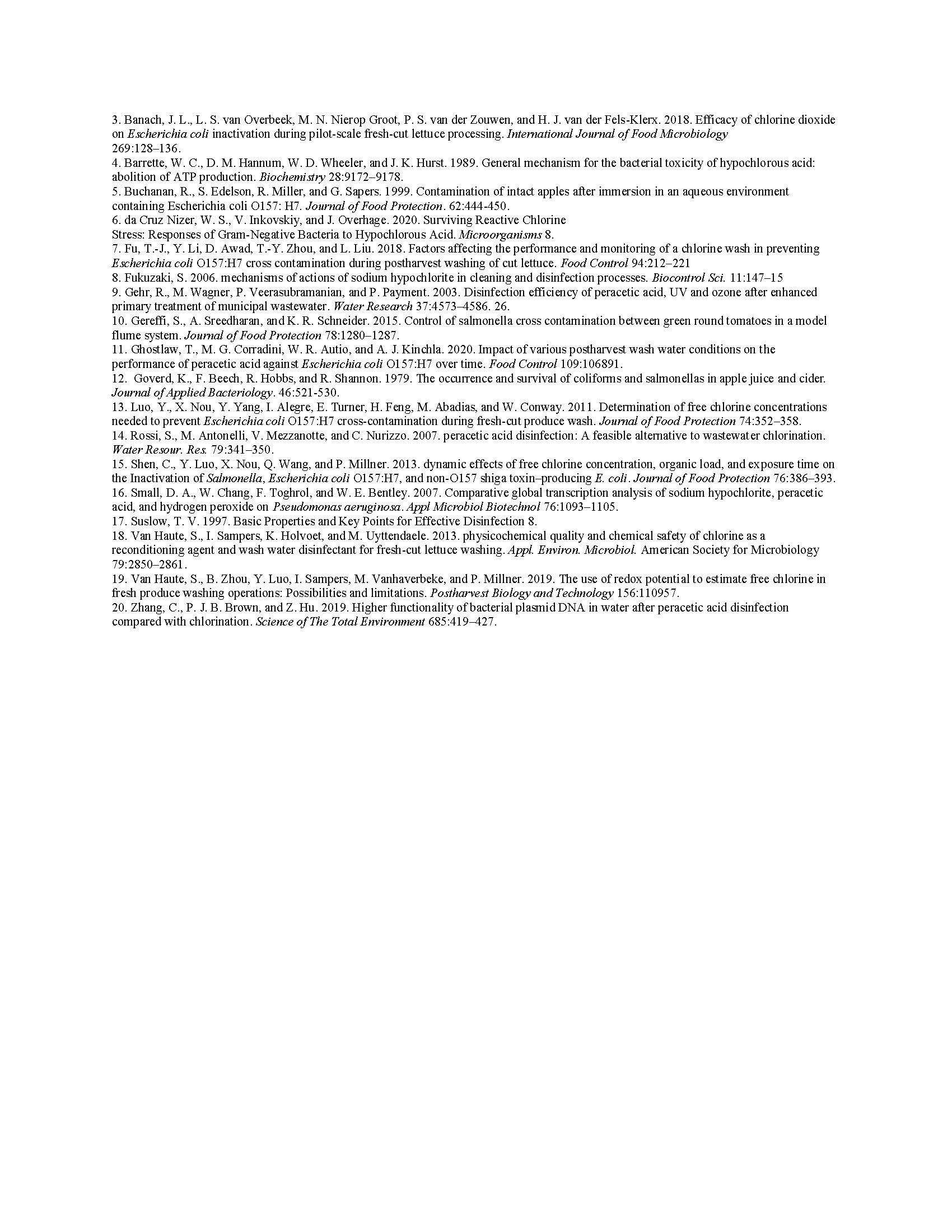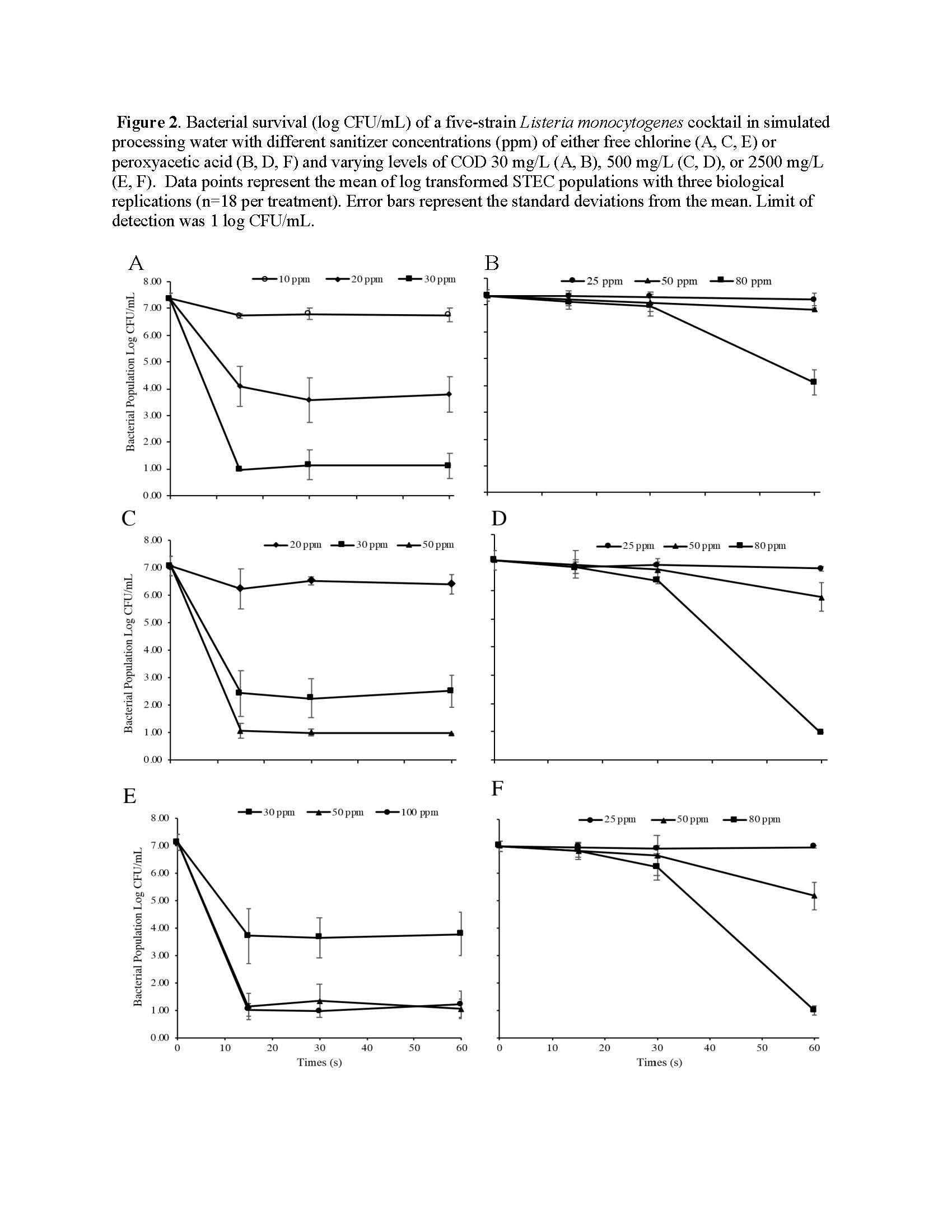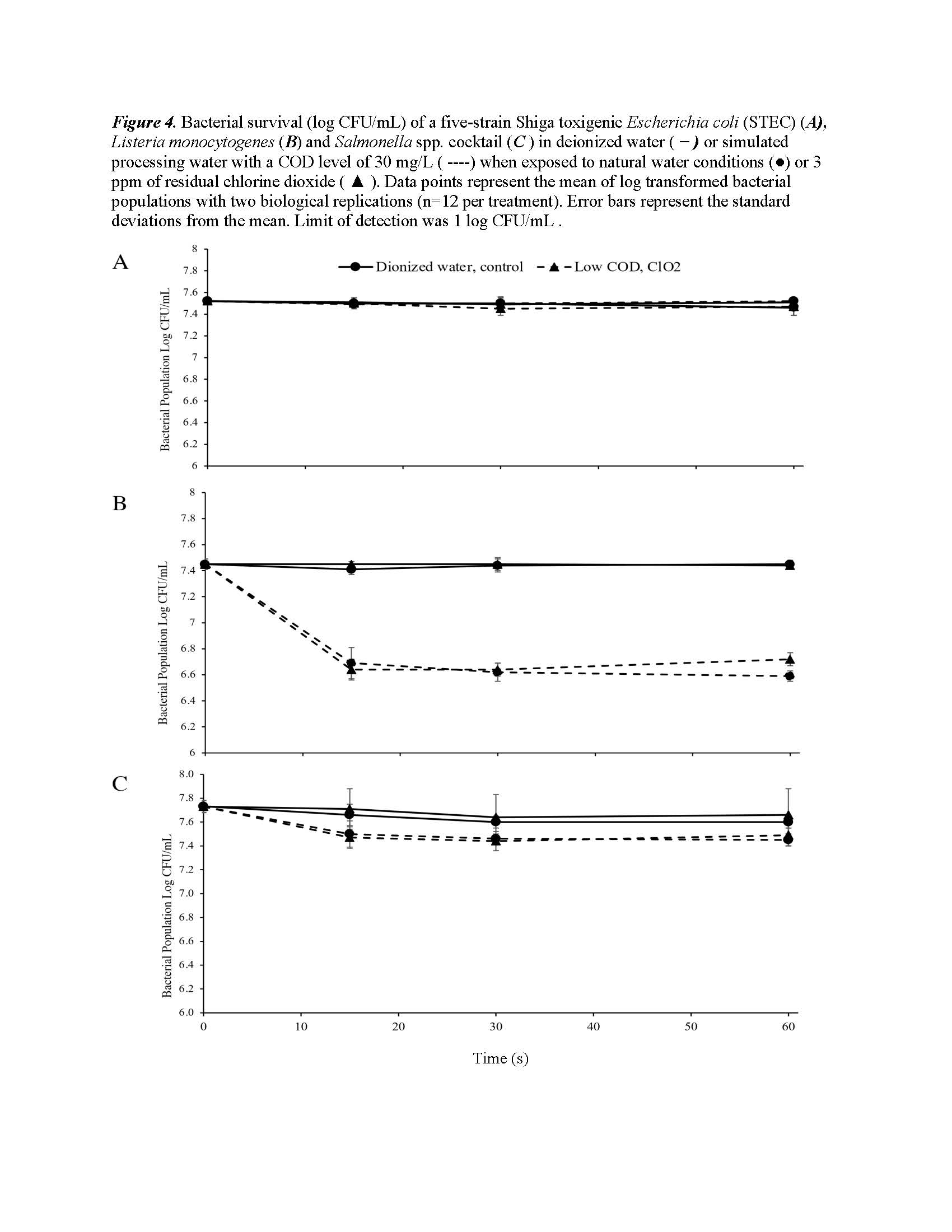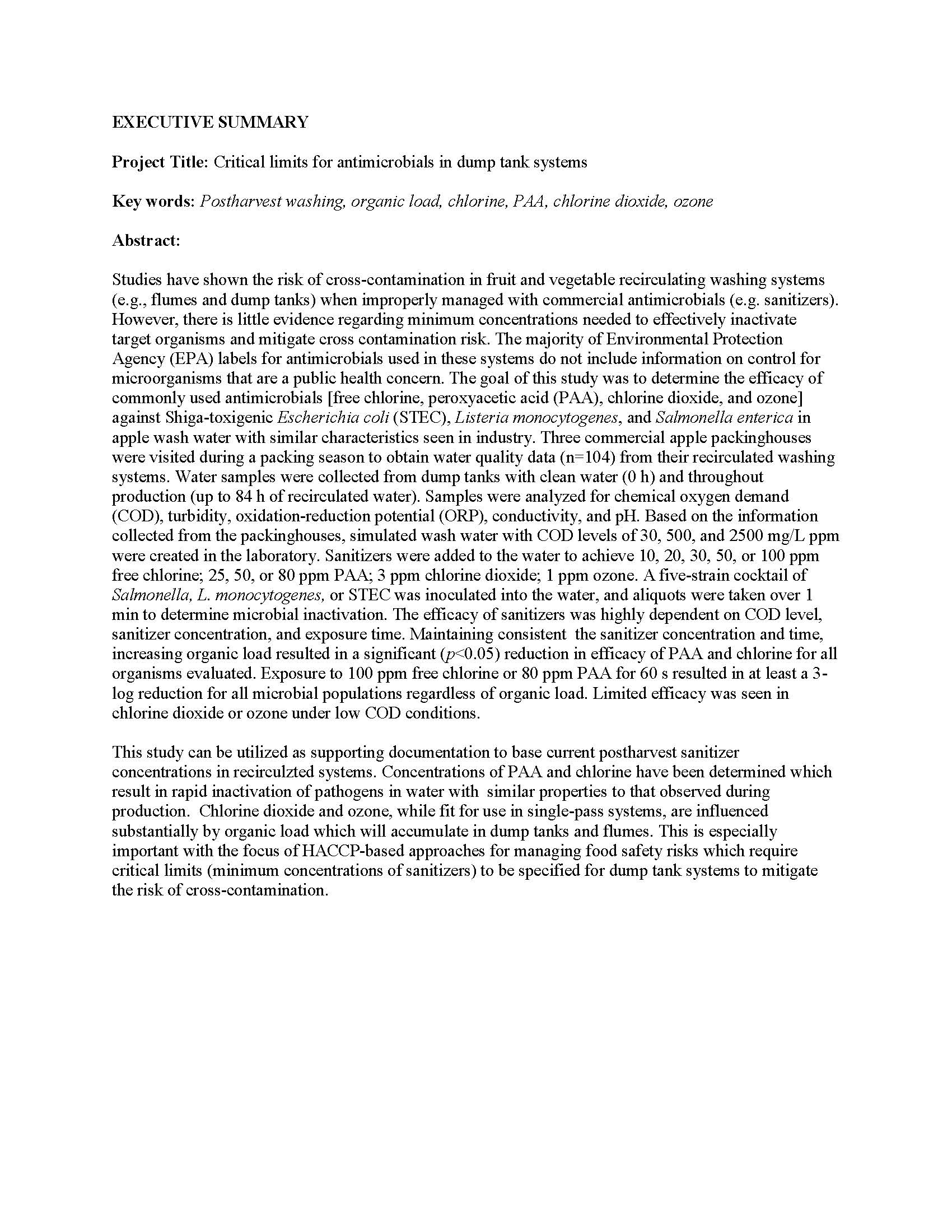Critical limits for antimicrobials in dump tank systems
Author: Faith Critzer
Published: 2023
Summary: Studies have shown the risk of cross-contamination in fruit and vegetable recirculating washing systems (e.g., flumes and dump tanks) when improperly managed with commercial antimicrobials (e.g. sanitizers). However, there is little evidence regarding minimum concentrations needed to effectively inactivate target organisms and mitigate cross contamination risk. The majority of Environmental Protection Agency (EPA) labels for antimicrobials used in these systems do not include information on control for microorganisms that are a public health concern. The goal of this study was to determine the efficacy of commonly used antimicrobials [free chlorine, peroxyacetic acid (PAA), chlorine dioxide, and ozone] against Shiga-toxigenic Escherichia coli (STEC), Listeria monocytogenes, and Salmonella enterica in apple wash water with similar characteristics seen in industry. Three commercial apple packinghouses were visited during a packing season to obtain water quality data (n=104) from their recirculated washing systems. Water samples were collected from dump tanks with clean water (0 h) and throughout production (up to 84 h of recirculated water). Samples were analyzed for chemical oxygen demand (COD), turbidity, oxidation-reduction potential (ORP), conductivity, and pH. Based on the information collected from the packinghouses, simulated wash water with COD levels of 30, 500, and 2500 mg/L ppm were created in the laboratory. Sanitizers were added to the water to achieve 10, 20, 30, 50, or 100 ppm free chlorine; 25, 50, or 80 ppm PAA; 3 ppm chlorine dioxide; 1 ppm ozone. A five-strain cocktail of Salmonella, L. monocytogenes, or STEC was inoculated into the water, and aliquots were taken over 1 min to determine microbial inactivation. The efficacy of sanitizers was highly dependent on COD level, sanitizer concentration, and exposure time. Maintaining consistent the sanitizer concentration and time, increasing organic load resulted in a significant (p<0.05) reduction in efficacy of PAA and chlorine for all organisms evaluated. Exposure to 100 ppm free chlorine or 80 ppm PAA for 60 s resulted in at least a 3-log reduction for all microbial populations regardless of organic load. Limited efficacy was seen in chlorine dioxide or ozone under low COD conditions. This study can be utilized as supporting documentation to base current postharvest sanitizer concentrations in recirculzted systems. Concentrations of PAA and chlorine have been determined which result in rapid inactivation of pathogens in water with similar properties to that observed during production. Chlorine dioxide and ozone, while fit for use in single-pass systems, are influenced substantially by organic load which will accumulate in dump tanks and flumes. This is especially important with the focus of HACCP-based approaches for managing food safety risks which require critical limits (minimum concentrations of sanitizers) to be specified for dump tank systems to mitigate the risk of cross-contamination.
Keywords:


